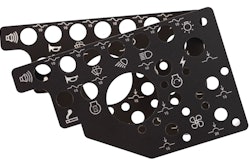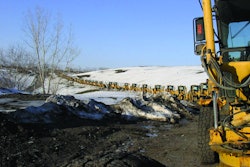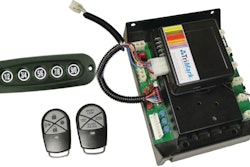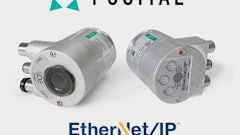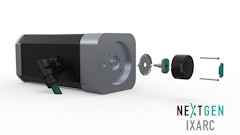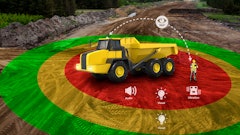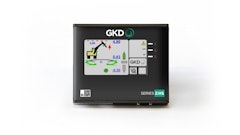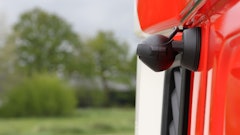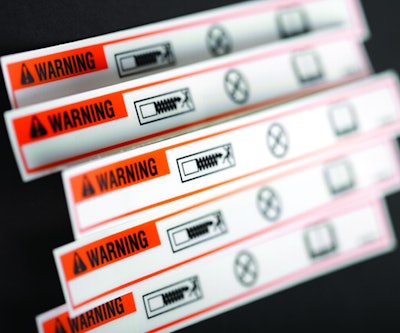
Caution. Warning! DANGER! Three words mean pretty much the same thing, right? Wrong. They’re not interchangeable, particularly when it comes to industrial graphics.
In fact, each of these “signal words” has a specific connotation that literally can mean the difference between life and death. Using them correctly on your signs, decals, and labels helps ensure that people from all backgrounds can instantly recognize and comprehend the potential danger, enables you to protect your employees and customers from harm, and minimizes the risk of legal issues.
Fortunately, determining the right signal words for your hazard signage is simple. ISO, ANSI, and SAE standards all provide a relatively consistent system for classifying hazards that’s based on a combination of two factors: 1) the severity of the potential injury or damage and 2) the likelihood of its occurrence.
To ensure you’re using the proper signal words at all times, you only need to follow these three easy steps:
Step 1: Assess the Degree of Potential Injury or Damage
You’ve identified a potential hazard and determined that safety signage is necessary. Your first step in identifying the right signal word for the situation is to assess how much injury or damage might occur if someone were to ignore that signage.
Hazards that may kill or maim an individual or destroy property or equipment should be considered SEVERE.
On the other hand, some hazards may simply cause bruises or cuts to an individual. Others may cause only damage to property or equipment. Classify a hazard as MINOR if the injured person will recover or if the damaged property or equipment can be repaired.
Step 2: Determine the Likelihood of Occurrence
Once you’ve decided if the potential injury or damage is severe or minor, your next step is to assess how likely that injury or damage is to occur. In other words, you need to make the distinction between what WILL happen or what COULD happen if the hazard signage is ignored.
If someone touches a live electrical wire, for example, it will shock them. There’s no doubt a shock will occur every time unless they take the necessary precautions—which is the reason for using safety signage.
If someone tampers with a moving belt, however, it could injure them. Just tapping the belt with a finger may not cause any injury at all, but there is the potential for danger.
Step 3: Select the Appropriate Signal Word and Color
After you’ve classified the potential injury or damage as severe or minor and determined the likelihood as “near certain” (will occur) or “possible” (may occur), you’re ready to choose the appropriate signal word for your hazard signage.
Each signal word is associated with a specific color to reinforce the message and the seriousness of the risk. It’s easy—just follow these guidelines or refer to the chart below:
DANGER
- Indicates the presence of a hazard that WILL cause SEVERE personal injury, death, or substantial property damage if ignored
- Appears on a RED background
WARNING
- Indicates the presence of a hazard that COULD cause SEVERE personal injury, death, or substantial property damage if ignored
- Appears on an ORANGE background
CAUTION
- Indicates the presence of a hazard that WILL or COULD cause MINOR personal injury or property damage if ignored
- Appears on a YELLOW background
NOTICE
- Notifies people of important installation, operation, or maintenance information that is NOT HAZARD RELATED
- Appears on a BLUE background
- Should never be used for hazard signage
NOTE: For maximum effectiveness, you should indicate only one hazard per sign, decal, or label. Sometimes, though, space limitations may require you to include multiple hazards on one graphic. If you must combine notifications, make sure they’re all the same level of severity. In other words, only group Warning notices with other Warning notices or Caution indicators with other Caution indicators.
IMPORTANT: Never combine two or more Danger notices. Danger-level hazards are severe enough that they must always be indicated on individual signs, decals, or labels.
Use the Proper Signal Words to Minimize Risk and Save Lives
By properly following the three signage determination steps above, you’ll be able to produce effective hazard signage that provides important information accurately, concisely, and with the appropriate level of urgency about the risk at hand.
Don’t underestimate the impact of word choice—overusing Danger diminishes its impact, while using Caution to warn of a severed hazard might be fatally misleading. That’s why following these guidelines to choose the right signal words is so important.
This three-step assessment is a proven way to ensure proper signage is produced, protect people from harm, and help mitigate legal issues.
|
Signal Word |
Color |
Potential Injury or Damage |
Likelihood of Occurrence |
|
DANGER |
Red |
Severe |
WILL occur if warning is ignored |
|
WARNING |
Orange |
Severe |
COULD occur if warning is ignored |
|
CAUTION |
Yellow |
Minor |
WILL or COULD occur if warning is ignored |
|
NOTICE |
Blue |
None |
N/A – this label is used for important instructions unrelated to hazards |
April Silver is the Pre-production Director at Muir Omni Graphics and an expert in planning, production, and application of industrial graphics. Muir Omni Graphics has more than 40 years of experience providing turnkey production and management solutions for OEM markings and decals, fleet and corporate vehicle markings, corporate identity, control panels and fascias, warning labels and signage, and specialty graphics. The company serves the off-highway, construction, transportation, and farm equipment markets. More information is available at www.muirgraphics.com.
By April Silver, Pre-production Director, Muir Omni Graphics




